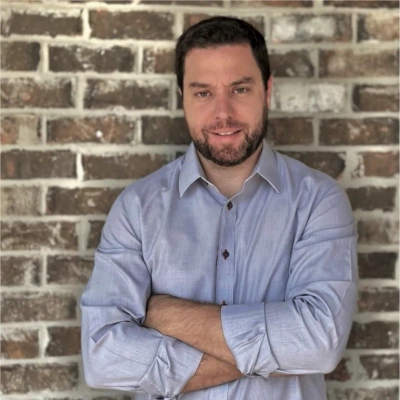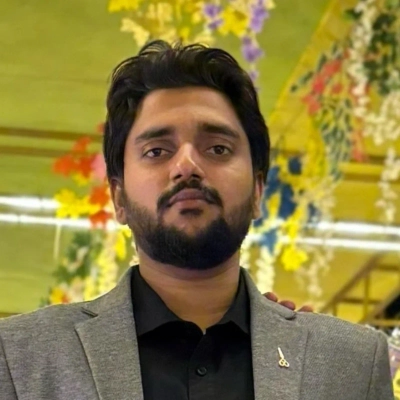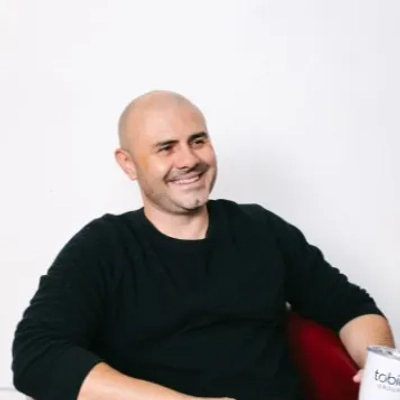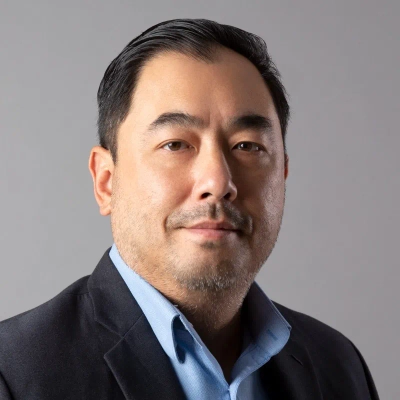Attracting and retaining exceptional talent remains a critical challenge for startups seeking sustainable growth in today’s competitive market. This article compiles proven strategies from successful startup leaders and experts who have mastered the art of building loyal, high-performing teams. From creating meaningful ownership structures to implementing transparent career paths, these actionable approaches help transform how organizations recruit and retain their most valuable asset—their people.
- Build Culture of Shared Ownership
- Create Founder’s Growth Budget for Development
- Target Passive Candidates for Better Fit
- Make Career Paths Transparent From Start
- Empower Team Members as Co-Builders
- Require Real Projects During Interview Process
- Practice Radical Transparency From Day One
- Assign Ownership of Outcomes Not Tasks
- Advertise Meaningful Problems and Specific Teams
- Provide Ownership of Impactful Projects Early
- Hire for Value Alignment Over Skills
- Treat Freelancers as Full Team Members
- Grant Early Ownership Stakes Through Options
- Give Engineering Teams Complete Project Ownership
- Implement Comprehensive Employee Recognition Program
- Build Network of External Specialists
Build Culture of Shared Ownership
When you are growing a startup, every hire feels like a cornerstone. Early on at CultureShift HR, I realized that talent retention was not just about offering competitive pay or benefits. It was about creating an environment where people felt their contributions mattered and where they could see a future for themselves.
One tactic that proved especially effective was building a culture of shared ownership. Instead of simply hiring for skills, we invited new team members into conversations about our mission and vision. We made sure they understood not only what their role was, but how it connected to the bigger picture. That sense of alignment helped people feel invested from the start.
We also focused on growth opportunities. Even when budgets were tight, we found ways to invest in professional development, whether through mentorship, skill-sharing sessions, or giving people stretch assignments that allowed them to grow. When employees see that you care about their future as much as your own, they are more likely to stay and thrive.
Retention is never about a single perk or program. It is about trust. The most effective tactic I have used is listening, really listening, to what people need to succeed and adjusting where possible. When you build with people instead of around them, you attract talent that not only joins your team but chooses to stay.

Create Founder’s Growth Budget for Development
Our strategy for attracting and retaining top talent as the startup grew was fundamentally anchored in two principles: radical transparency and an aggressive commitment to professional growth, designed to position us as a career accelerator, not just a job. Attracting talent was achieved by being completely open about our financial health, long-term vision, and the difficult challenges ahead. We didn’t oversell the stability; we sold the opportunity to build something consequential and the chance to own significant, complex problems. We prioritized candidates who demonstrated an entrepreneurial mindset and a high tolerance for ambiguity, framing our early-stage status as a feature, not a bug.
Retention was secured by delivering on the growth promise. We instituted a mandatory internal mobility and stretch assignment program. Every top performer was expected to take on a major cross-functional project or temporarily transition to a new role every 12 to 18 months. This was not optional; it was a cornerstone of their development plan. For example, a high-performing engineer might spend six months leading a customer success-focused task force, or a marketing manager would be tasked with productizing a new service line.
One particularly effective tactic we employed was the “Founder’s Growth Budget.” Instead of a generic training stipend, we gave high-potential employees a significant annual budget, often $5,000 to $10,000, with the sole mandate that they use it for a non-traditional development experience that would directly benefit a future company initiative. This could be anything from attending an exclusive industry summit in another country, hiring a specialized executive coach for a quarter, or even funding a small, experimental side project for the company. This tactic had a massive impact on retention because it demonstrated a deeply personalized investment in their future, making them feel like a co-founder in their own career journey and signaling that the company viewed their expertise as a long-term asset. It created an internal economy of skill acquisition and cemented a culture of continuous evolution, directly combating the typical startup retention challenge where people leave for the next, bigger challenge.

Target Passive Candidates for Better Fit
From my experience working in supply chain and now as a recruiter, one of the most effective strategies for long-term retention has been targeting passive candidates rather than relying solely on active job seekers.
Active candidates are those currently looking for a new role. They’re applying, sending resumes, and often exploring multiple opportunities at once.
Passive candidates are already employed, often successful in their current roles, and not actively applying. They may not even be considering a change until the right opportunity is presented.
When we engage with passive candidates, the conversations are more about alignment, helping them see how a role can advance their long-term career goals rather than just filling an immediate need. That tends to result in better matches and, ultimately, stronger retention. These candidates aren’t making a quick switch because they need any job; they’re making a thoughtful move because the opportunity is the right fit.
We’ve seen this especially in supply chain hiring. The candidates who weren’t actively searching but were open to the right opportunity often end up staying longer, performing better, and adding more value to the organizations that hire them.
Targeting passive talent may take more time and relationship-building upfront, but it pays off with hires who are more committed, better aligned, and more likely to stay and grow with the company.

Make Career Paths Transparent From Start
At HypeTribe, our strategy for attracting and retaining top talent was about getting the fundamentals right.
We focused on three things employees care about most: dignity in the workplace, prompt payments, and a clear career trajectory. When people feel respected, paid on time, and know where they’re headed, they don’t just join you… they grow with you!
One tactic that worked especially well was making career paths transparent from the start. Every team member could see how their role could evolve in 6, 12, or 24 months. That visibility built trust, and trust is what kept our best people with us long-term.

Empower Team Members as Co-Builders
Our strategy for attracting and retaining top talent centered on one fundamental principle: treating team members as co-builders rather than just employees. In our early growth stages, when we couldn’t always offer competitive salaries, we focused instead on providing compelling vision, meaningful ownership, and substantial growth opportunities.
The most effective tactic we implemented was integrating new hires directly into product development and brand storytelling from their first day. Rather than confining them to narrowly defined roles, we provided real responsibility with visible impact. This approach to ownership created a level of loyalty that traditional perks or impressive titles simply cannot match.
Our retention success stemmed from this same philosophy, maintaining a clear purpose and establishing consistent feedback channels. When people genuinely feel their work is both recognized and actively shaping the company’s direction, they don’t merely stay with the organization, they flourish within it.

Require Real Projects During Interview Process
I stopped trying to convince people to work for me and started making them prove they deserved the opportunity. Instead of selling candidates on the role, I created application processes that filtered for people who were already motivated and aligned with our mission.
The most effective tactic was requiring candidates to complete a real project as part of the interview process. Not busy work, but actual deliverables that demonstrated their thinking and execution ability. This eliminated people who just wanted a paycheck and attracted individuals who were genuinely excited about contributing to what we were building.
Top performers want to work somewhere that challenges them and has high standards. When you make the hiring process easy, you attract people who want easy jobs. When you make it rigorous, you attract people who want to do meaningful work and grow their skills. Most startups beg for talent instead of being selective, which is why they end up with mediocre teams that slow down growth instead of accelerating it.

Practice Radical Transparency From Day One
The core strategy was this: build something people actually want to be part of. Not just a paycheck or a “cool startup” but a mission with real weight, clarity, and room to grow. One tactic that worked insanely well for me was the radical transparency from day one.
We didn’t sugarcoat. We showed candidates the upside and the chaos. We shared what we were building, what was broken, and what they’d be responsible for fixing. It attracted people who wanted ownership, not just comfort. That’s how you get talent that sticks, not because it’s easy, but because they’re invested in the build.

Assign Ownership of Outcomes Not Tasks
The most effective tactic I’ve used to attract and retain top talent is giving them ownership of outcomes, not just tasks. For instance, instead of assigning “design this screen,” I framed it as “own this entire onboarding flow, from UX research to developer handoff.” It’s a subtle difference, but it transforms how designers see their role.
This approach attracted people who wanted more than just a paycheck and were looking to become decision-makers & thought leaders in their own right. Once they had that sense of ownership, retention became natural.
They weren’t just executing someone else’s vision; they were shaping products that mattered, and for us, that’s what keeps great talent around.

Advertise Meaningful Problems and Specific Teams
I really like to highlight the meaningful problems our company solves for the world, the challenges of our business, and the specific team members candidates will be working with. Of course, we still advertise pay rate, but top talent wants more than just great benefits or compensation (which they can receive from anywhere). If someone is considering joining our team, I want them to know exactly the projects that they’re going to be working on on Day 1, how their work will impact the world around them, and who they’ll be sitting next to (virtually or otherwise) while they’re working on it. Top candidates don’t just want a lot of money, or a great culture, or interesting/hard problems, or a great mission they can feel good about, or awesome coworkers… they want all of these, and shouldn’t settle for anything less than the full package. So I try to make sure I advertise the full package!

Provide Ownership of Impactful Projects Early
Attracting and retaining top talent during a high-growth phase came down to creating an environment where people felt both challenged and valued. One effective tactic was giving individuals ownership of impactful projects early on. Instead of limiting responsibilities to rigid job descriptions, talented professionals were encouraged to take initiative, experiment, and contribute ideas that shaped outcomes.
This approach not only accelerated innovation but also created a sense of pride and belonging. When people see that their contributions directly influence business growth, they stay engaged and motivated. Compensation matters, of course, but meaningful work and visible impact proved to be the strongest retention drivers.

Hire for Value Alignment Over Skills
Our strategy for talent acquisition and retention centered on deliberately hiring individuals whose personal values aligned with our company’s core principles of innovation, integrity, and collaboration. We found that employees who shared our fundamental values were naturally more engaged and stayed with the company longer than those hired primarily for technical skills alone. To support this approach, we implemented regular team-building activities and feedback forums that reinforced our commitment to a transparent work environment. This values-first hiring approach significantly reduced turnover while creating teams that worked cohesively toward our strategic objectives.

Treat Freelancers as Full Team Members
We work with a lot of freelancers, and one of the biggest challenges we’ve had is keeping them engaged. Our solution was to stop thinking of them as freelancers and start treating them like full team members. They get the same welcome package of branded clothing, gear, and onboarding as our full-time employees. That simple shift has made us far stickier with top talent and has driven much stronger engagement across the team. The investment upfront has paid major dividends in the form of retaining those part-timers.

Grant Early Ownership Stakes Through Options
One especially effective strategy was granting employees early ownership stakes in the form of stock options, which created a high degree of alignment with the company’s mission and long-term success. This strategy attracted not only hungry prospects who wanted to build something from the ground up but also motivated them to stay engaged as the company scaled. The combination of financial upside and direct influence on the business gave elite talent both near-term purpose and upside reward.

Give Engineering Teams Complete Project Ownership
Our strategy for attracting and retaining top talent centered on giving engineering teams complete ownership of their projects. By allowing team members to manage the entire development process from concept to launch, they could see the direct impact of their work on our business outcomes. This approach not only helped us recruit skilled professionals looking for meaningful work but also maintained high engagement levels among our existing staff. The result has been consistently low turnover rates, even during periods of rapid growth.

Implement Comprehensive Employee Recognition Program
As the CEO of InCorp Vietnam, my approach to attracting and retaining top talent during our startup’s growth was to focus on building a strong, positive company culture. I introduced a comprehensive employee recognition program to celebrate outstanding performance, making team members feel valued and motivated. This not only boosted retention but also drew in new talent seeking an encouraging and supportive workplace. A recent study also indicates that companies with strong recognition programs have 31% lower voluntary turnover rates. By focusing on creating a culture of appreciation and recognition, we have managed to build a team of dedicated and engaged employees, driving our company’s success.

Build Network of External Specialists
My strategy for attracting and retaining top talent was to build a strong network of external specialists instead of rushing to hire a large internal team. This gave me access to expert-level skills while keeping the business agile and scalable.
One key tactic was partnering with a niche agency for areas like PR, marketing, design, and tech. By treating them as part of the team, clearly communicating goals, and aligning them with our mission, we built long-term, loyal relationships. This approach provided flexibility to scale up for launches or projects and scale back when needed—keeping costs sustainable while maintaining high-quality results.
Tip: Treat external collaborators like true team members. Strong communication and mutual respect will help you attract top talent without the risks of rapid hiring.


